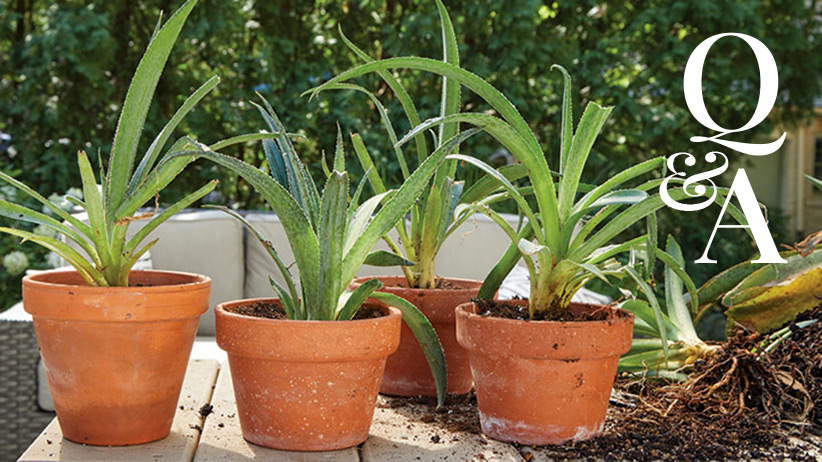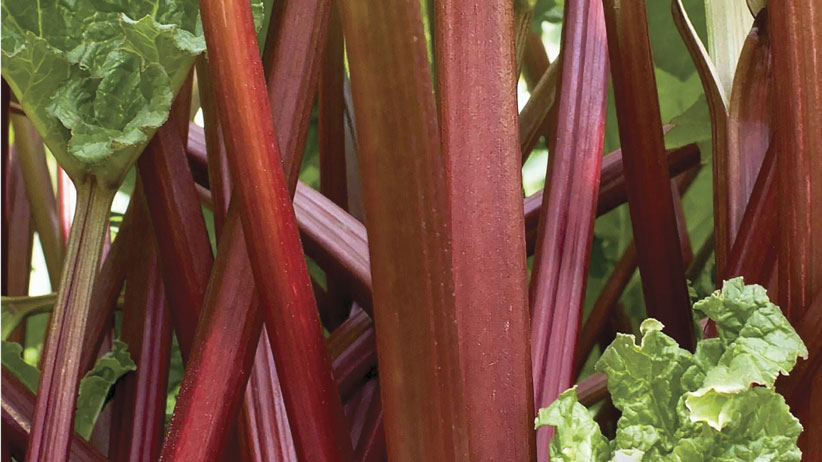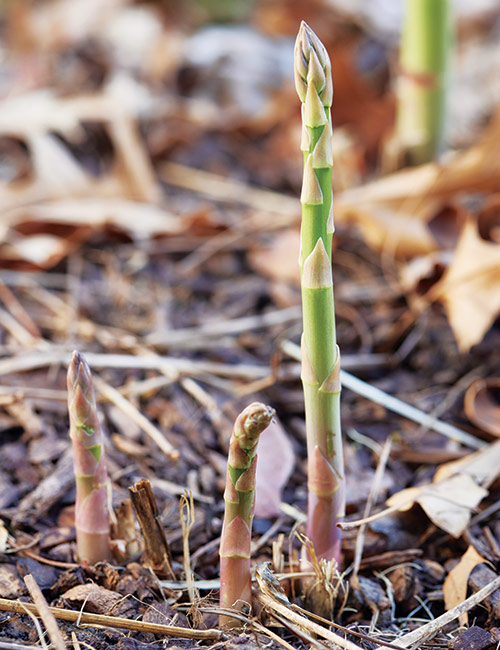
Growing asparagus
Asparagus is one of the first crops you can harvest in spring, and because it’s a long-lived perennial, you can count on those sweet, crisp spears every year for decades. By midsummer its tall feathery foliage adds beautiful texture to the garden before it sets seed and goes dormant after a hard frost. You’ll need time, patience and a few special techniques to get a good asparagus patch going. This guide can help.
Asparagus (Asparagus officinalis)
Type Perennial
When to plant In early spring when soil temperatures reach 45 degrees F
How many to plant For fresh eating, 5 to 10 plants for an individual, 25 plants for a family of four
Light Full sun, can tolerate part shade
Soil Rich, well drained
When to harvest After the second or third year, when spears are 6 to 8 in. tall
Hardiness Cold hardy USDA zones 3 to 10
Choose the right spot to plant
Although plants can tolerate part shade, asparagus grows more vigorously with 6 to 8 hours of full sun each day. Good soil drainage is another must, as roots rot easily in soggy soil. They are especially sensitive to soil compaction and root disturbance, so plant them in a raised bed or a spot where its tall foliage won’t shade out nearby sun-loving companions.
Plants are cold hardy in USDA zones 3 to 10, so gardeners in almost all parts of North America can grow asparagus. However, some varieties do better in different climates. Learn more in “The Right Variety for Your Zone” at below.
You Might Also Like:
Calculate How Many Vegetables to Plant
Best Places to Buy Garden Seeds
Compost Basics
Find the right type of asparagus for your cold zone
In zones 3 to 5 choose late-emerging varieties that are less likely to be damaged by spring frosts:
- ‘Jersey Giant’
- ‘Jersey King’
- ‘Jersey Knight’
- ‘Millennium’
- ‘Purple Passion’
In zones 6 to 10 choose varieties that tolerate summer heat well:
- ‘Apollo’
- ‘Atlas’
- ‘Erasmus’
- ‘Grande’
- ‘Spartacus’
- UC 157
How to start an asparagus patch
The quickest and most reliable way to start an asparagus patch is to buy crowns, which are 1-year-old plants. Most of the plants you can buy are male hybrids, which live longer than female plants, produce no seeds, and grow a greater number of small, uniform spears. Plant as soon as soil can be worked (about 45 degrees F) in early spring.
Store crowns in the refrigerator until you’re ready to plant. Then soak the crowns in a bucket of water for an hour to hydrate them before they go into the ground. Fertilizer, compost and mulch can help get your plants off to a great start. Follow the step-by-step planting guide below to find out when and where to use them.

Step 1. Cultivate the right environment
To start an asparagus patch and dig a trench 12 to 18 inches deep and 6 to 8 inches wide instead of individual planting holes. This makes it easier to amend the soil all at once and ensures the entire patch gets the same amount of nutrients. Next, spread a layer of fertilizer at the bottom of the trench, then cover it with 2 inches of soil before placing crowns. You don't want the fertilizer touching the roots or it could cause burn.
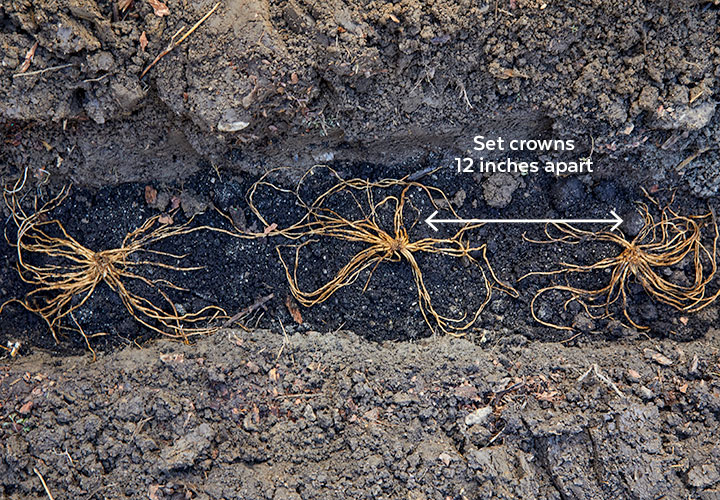
Step 2. Plant the asparagus crowns
To plant crowns, spread the roots out over mounded soil at the bottom of the trench. Make sure to place plants 12 inches apart measuring from the center of the crown.

3. Refill the trench
After you've placed your asparagus crowns in the trench, cover them with soil and topdress with 2 to 3 inches of compost or manure. Add 2 inches of straw mulch to help keep weeds down and even soil moisture, then water in.
You Might Also Like:
Watch Our Vegetable Gardening Video Playlist on YouTube
How to Grow Radishes
Vegetable Garden Planting Plan
How to care for an asparagus patch
Generally, asparagus plants need about an inch of water per week, either from rainfall or irrigation. Deep, infrequent waterings encourage roots to grow deeper, so plants tolerate dry spells better. They’re heavy feeders and benefit from annual applications of a balanced, all-purpose granular fertilizer, following label directions. Top dress with 2 to 3 inches of compost or manure in early spring before spears start to emerge.
It’s important to keep weed competition down, especially as a new patch is getting established. In early spring, apply a 1- to 2-inch layer of straw mulch to help prevent weeds and retain moisture in the soil. Even if you mulch, weeds can still creep in. If that happens, you may need to carefully hand pull or hoe weeds lightly.
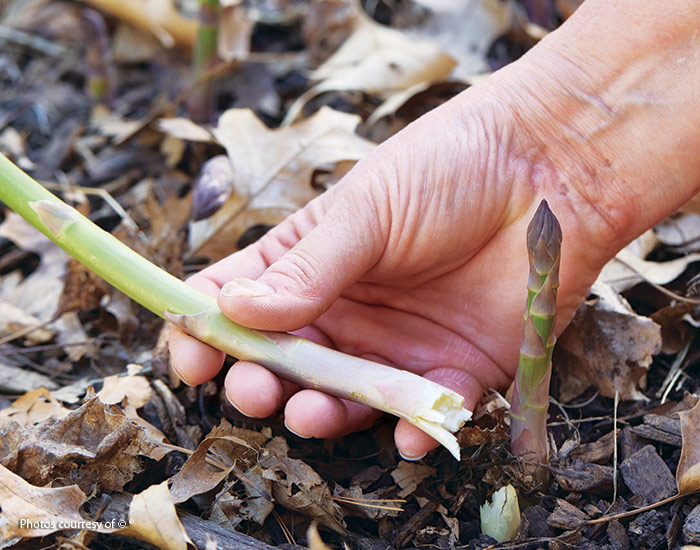
Tips for harvesting asparagus
Although you might be anxious to harvest spears as soon as you see them the first year, wait two or three years before you start harvesting to give plants time to establish and grow into a more vigorous patch.
In the second or third year, harvest spears when they are 6 to 8 inches tall and tips are still tightly closed like the one in the photo above. Check plants every day or two because the spears can grow quickly! After 6 or 8 weeks, stop harvesting and let any new spears that form go to seed. The ferny foliage that forms later will photosynthesize and store energy for next year’s growth. When the foliage turns yellow or brown in fall, cut it back to within 2 inches of the ground. Add a 4- to 6-inch layer of straw mulch to protect the crowns in winter, then remove it before spears emerge in spring.
How to grow white asparagus
You can get tender gourmet-delicacy white asparagus by depriving spears of light as they emerge in early spring. This is traditionally done by covering the spears with soil, but you can use other materials too. Dark plastic tunnels or sheeting, mulch or a pot with no holes will give you the same result with a little less effort.
You Might Also Like:
The Best of Garden Gate Tips Book
Tips for Growing Root Vegetables
Small Vegetable Garden Ideas
Pin It for Later











